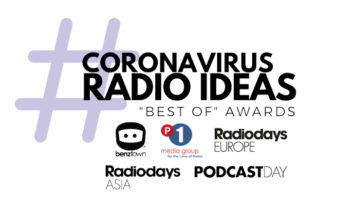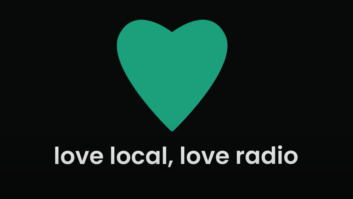
The author of this commentary is director of client services at Write Label.
Local radio ad sales have been hit particularly hard by COVID-19. Content like radio and podcasts, when the world is the most captivated, are taking an unfortunate hit to revenue even though consumers are tuning in. Media is being consumed across a broader range of time slots and outlets, and despite what you might assume, platforms like Netflix are not the only winners.
In fact, according to Nielsen, 83% of Americans report that they’re listening to as much or more radio as they did prior to the pandemic. It is through these more traditional mediums, like local radio and television (which has seen a 7% spike in local news viewership) where broadcasters and advertisers can provide useful, relevant material to communities.
So, what are we seeing, and how can radio, especially on a local level, navigate this rapidly changing situation?
Not only will consumers remember this time forever more, but the brands that invest in advertising in a bare market are often the ones that come back with a vengeance when the market returns.
Non-traditional advertisers, that usually don’t focus on standard mediums, are now using radio to target people at home who are likely consuming content via traditional media streams they may not have frequented in the past. Traditional advertisers are also now faced with an increasing need for relevant content that speaks to consumers in the time of COVID-19.
What is radio doing right?
Radio as a medium has always been intimate, making it an effective tool during a crisis. Captive audiences like commuters have long been the lifeblood of radio, and while those folks are no longer commuting, radio is still serving a purpose.
Someone speaking in your ear is as personal as it gets, and as we are all barricaded inside, local radio is rising to the challenge during COVID-19 to inform and assist their listeners. In urban hubs like New York City, people are spoiled by endless food delivery options, and access to sufficient aid and relief platforms, where in suburban and rural areas, folks are not so fortunate.
We have seen local media outlets responding to the rally cry from consumers and local businesses by setting up useful and meaningful tools to better the community. From dedicated food delivery platforms for restaurants that are still operating, to raising money for causes around COVID-19 and providing access to food services for those in need, these interactions create a unique, personal and emotional connection with audiences that perhaps only radio can achieve during this time. Communities can come together and feel connected via the medium.
For example, Adams Radio Group CEO Ron Stone recently developed a radiothon for Feeding America. What started with a few independent radio stations coming together, turned into 2,000 individual stations planning to air the radiothon. The recent “Rise Up New York!” telethon also helped Robin Hood’s COVID-19 relief fund reach $115 million, thanks to iHeartMedia executive John Sykes, credited with leading the charge in booking the big names for the event.
Additionally, iHeart’s New Hampshire cluster, with help from TV station WMUR, raised over $760,000 for the New Hampshire Food Bank following a one-hour broadcast called: “Project Community: New Hampshire Together From Home.” And Cox Media Group (CMG) Tampa partnered with Metropolitan Ministries to host “Feed It Forward: A Virtual Food Drive” on April 16. More than $250,000 was raised to help families that have been directly impacted by the pandemic.
Radio is a cost-effective medium for brands to utilize during this kind of crisis, with minimally required production efforts but messaging does have to shift rapidly to address unfolding circumstances and consumer needs. As a local medium, it’s also keeping consumers informed and up-to-date on business opening hours as well as closures, and information around where it is best to shop locally. Radio is in a unique conduit for community connectedness for consumers, as they increasingly crave information (as well as comfort) from the media.
What needs to happen next?
Now, more than ever brands need local, targeted messaging, and platforms that can produce swift and relevant content to address the ever-changing COVID-19 situation.
As we see brands and agencies quickly and strategically developing reworked content around the pandemic, local radio outlets need to be preemptive about what brands need, and have sales teams getting in front of the crisis rather than being reactive as the situation unfolds.
Advertisers should not underestimate the power of radio as the pandemic unfolds. As the recent study from Nielsen showed, 72% of daily radio users plan to shop for groceries over the next week, while 53% will be getting gas for their vehicle, and 43% collecting take out from a local restaurant.
Consumers often have a distrust of national media, and so now is the time for local radio to shine, becoming part of community infrastructure and providing a unique mix of information and anxiety releasing content, like music, that other media platforms are unable to deliver.
In good times people like to advertise, in bad times, people have to advertise. If radio plays it cards right, it can come out of COVID-19 as a savior for local businesses.
Write Label is a writing platform that offers crowdsourced creative writing solutions. See http://www.writelabel.com.
Radio World welcomes proposals for guest commentaries and thought pieces. Email mailto:[email protected]










